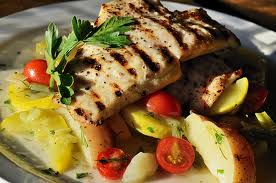Lately I have been in travel and entertainment mode and that seems to necessitate eating in restaurants much more than I would like. Do you even seem trapped in life phases like that? Not to worry.
The first thing to know about restaurant food is that almost all of it is highly processed. Have you ever noticed how a particular entrée tastes exactly the same at any Applebee’s you might visit? It’s no coincidence or even a precisely managed cookbook. No, it all comes from the same centralized chemistry lab they like to call a “kitchen.”
Yes, even the salads are probably prepared from bagged greens that have been sprayed to maximum lifespan–for the greens, not for you.
Most soups loaded with unhealthy table salt come from cans or huge chemically-laden institutional-sized bags. Most entrees also come from frozen stock. How appetizing!
I don’t even want to go into the sources of meats most commonly served in restaurants that usually come from animals raised on feed lots fed a variety of horrible things like plastic pellets, arsenic, and even members of their own species, just to name a few. Then there are farmed fish with ivermectin (a carcinogenic substance used to rid the poor fish of sea lice).
Then add in the grossly oversized restaurant portions, the heavy sugar and salt content and you’ll see that restaurant eating can really be a problem in terms of your waistline and your overall health.
Fine dining establishments may have healthier choices, in the unlikely event your wallet or your expense account can stand the punishment
Here are few tips to help you avoid the pitfalls of restaurant eating:
1. Avoid chain restaurants. They almost invariably mass produce and process their “food.” Mom and pop and local restaurants are more likely to have local grown and prepared food.
2. ASK! Interrogate your server. If the server doesn’t know the source of meats, fish and other menu items, ask to talk to a manager. You definitely want to know if fish is wild caught, if MSG is added and if organic salad ingredients are available.
3. BYO: Salad dressings are almost always from highly processed sources. Bring a small container of your own dressing.
4. Nix the bread: Again, it’s almost always made from brominated white flour and has virtually no nutritional value no matter how good it might smell when the steaming basket is set on your table.
5. Say “no” to fried and breaded: Most restaurant chains use unhealthy fats and even trans fatty acids, In any case, fried food is loaded with empty calories. Ditto for most sauces and gravies, which come from a plastic bag full of chemically-laden goo.
5. Say no to desert: That’s so hard, I know. Just know also that the deserts you prepare at home are undoubtedly healthier, have less sugar and are better for you. Opt instead for fresh fruit, if they have it, or just a cup of tea.
6. Ask for a go box: Then put half of your entrée in it as soon as it is served. Restaurant portions are usually about twice the number of calories you should be consuming at one sitting.
7. Shop local: Even if you just have one of those mini-fridges in your hotel room the local supermarket or health food store will probably supply you with some essentials even organic pre-washed salad greens, perhaps some olives, a little organic cheese and you’re good to go.
And finally,remember I believe that all food is nourishing when combined with a good attitude. I remember a study done several years ago that showed that prison inmates who paused for a moment to bless their food, were far healthier than their fellow inmates who did not bless the same institutional glop they were eating.
Ahh, the power of the mind!








Comments are closed.